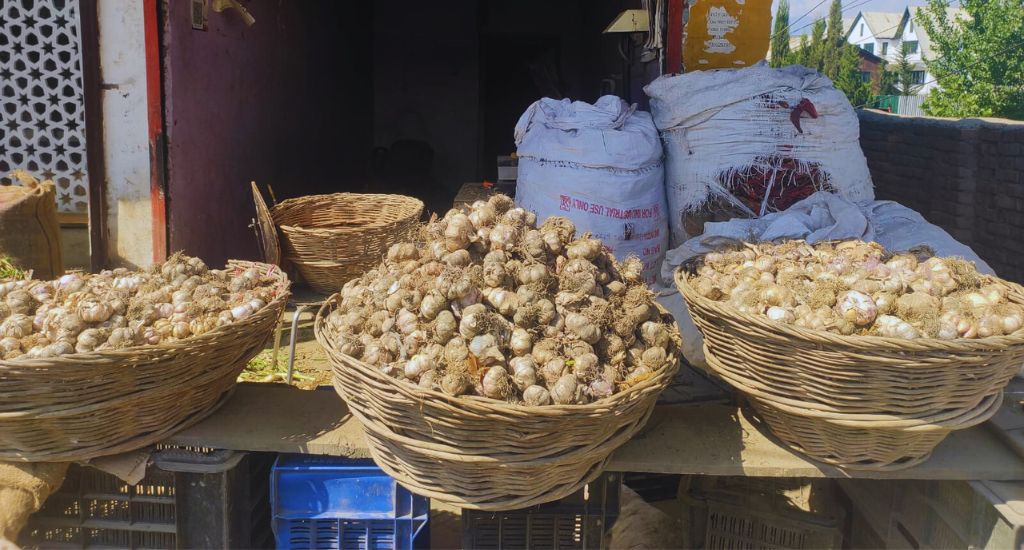
Women suffer as Kashmir garlic faces market blues
As the market for Kashmiri garlic records a slump for the fourth year in a row, growers have been pushed against the wall in the Valley’s villages.

As the market for Kashmiri garlic records a slump for the fourth year in a row, growers have been pushed against the wall in the Valley’s villages.
In the serene valleys of rural Kashmir, where the beauty of nature masks the struggles of its inhabitants, a poignant tale unfolds. Here, amidst the lush landscapes, lies a crop that holds not only sustenance but also dreams of prosperity for its cultivators — garlic.
However, this year, as the market for this precious bulb witnesses a slump for the fourth consecutive year, the hopes of garlic growers, particularly women, are being shattered.
Meet Firdousa Akhter, a 37-year-old homemaker, who carefully covers her yield of garlic with a sheet of polythene to shield it from overnight showers. She has been hoping that this year will bring a much-needed turn of fortune.
But her dreams are short-lived, as a dealer arrives in the morning with his load carrier, offering a meagre price for her crop. This scenario has become a dreaded reality for many farmers in Kashmir, including those from the postcard-perfect village of Lakripora in Budgam district.
For the past three years, a dark cloud has loomed over Kashmir’s garlic farmers, as the prices continue to plummet. From 2020, the prices have fallen by a staggering 40-50 percent, leaving these cultivators disheartened and struggling to make ends meet.
Zeba Begum, a homemaker who grows garlic in a portion of her orchard, shares the villagers’ disappointment.
Also Read | Turning Kashmir’s potatoes into popular chips
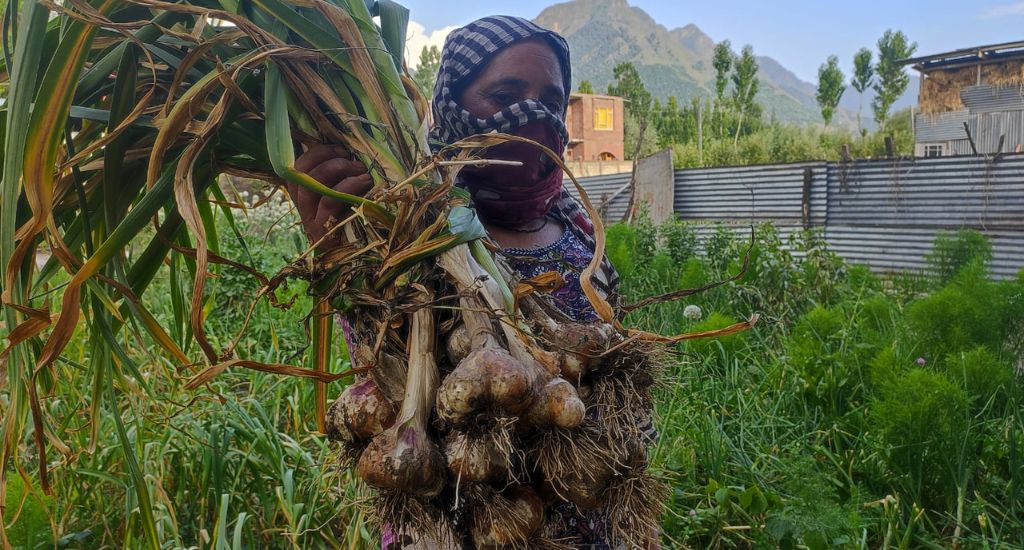
“This year, I had hoped for better results. There is a good yield of garlic in our village. However, the prices have once again let us down. This feels like a never-ending nightmare,” she lamented.
Bilal Ahmad, a garlic dealer from Anantnag district, attributes this grim situation to a significant decline in demand from outside the Valley, particularly from Himachal Pradesh, where Kashmiri garlic was once a prized commodity.
The Covid-19 pandemic’s outbreak further exacerbated the crisis, leading to a bleak outlook for the garlic trade in Kashmir. With hundreds of truckloads of garlic exported annually to Himachal Pradesh before Covid-19, the Valley’s garlic was revered for its larger-sized bulbs and unique grey-white colour, making it ideal as quality seed for cultivation in the neighbouring hilly region.
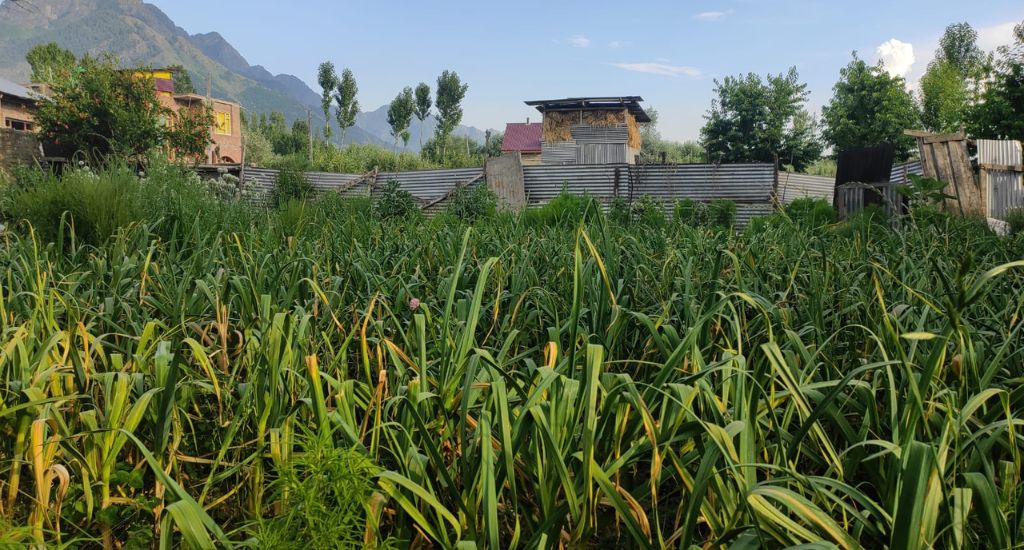
In the past, Ahmad used to supply over 3,000 quintals of garlic annually, mainly to Himachal Pradesh. Last year, he supplied only 350 quintals, and this year, he is still waiting for orders.
In the bustling Parimpora vegetable mandi of Srinagar, a once-thriving trade now struggles to regain its former glory. A kilogram of garlic, which commanded a price between Rs 60 and Rs 110 during pre-Covid times, now barely fetches Rs 30 to Rs 60 in the market.
The demand for Himachali garlic in south Indian markets has dwindled, impacting the demand for Kashmiri garlic seed in Himachal. This has contributed to the price decline, explained Chowdhary Mohammad Iqbal, the director of Kashmir’s agriculture department.
Watch | Rain washes away bumper cherry crop in Kashmir
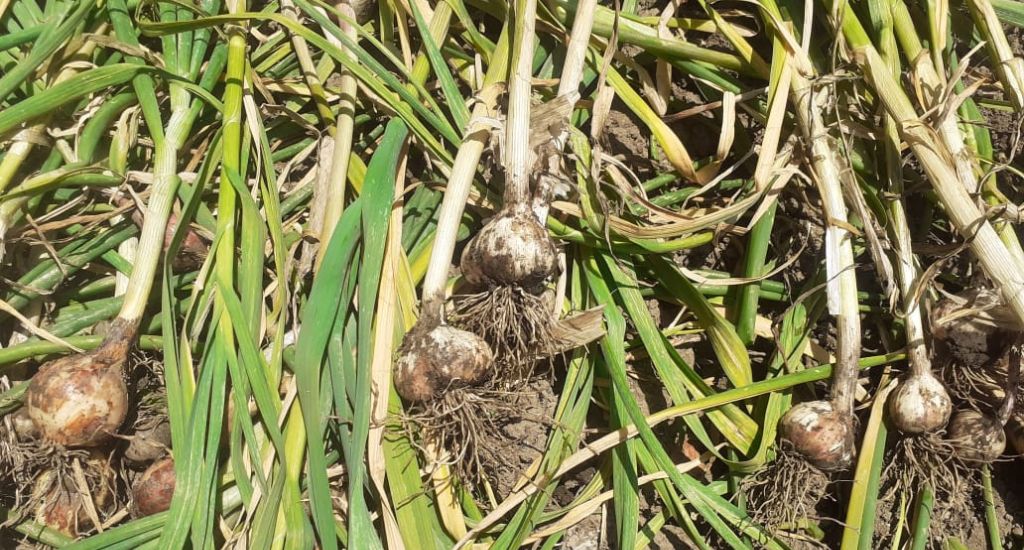
Moreover, competition has emerged from states like Gujarat and Madhya Pradesh, which now produce garlic in abundance, supplying it at competitive rates to various parts of the country.
Every year, rural areas in Kashmir produce thousands of tonnes of garlic. Cultivated in October and harvested in June, garlic is grown in kitchen gardens, backyards, and even small orchards.
Amidst this unfolding crisis, one group of farmers bears the brunt of the struggle more acutely — women. Traditionally responsible for cultivating garlic in the family, women have relied on the surplus produce to support their households and augment their earnings. But with the prices hitting rock bottom, their dreams of earning a substantial amount from the surplus garlic have crumbled.
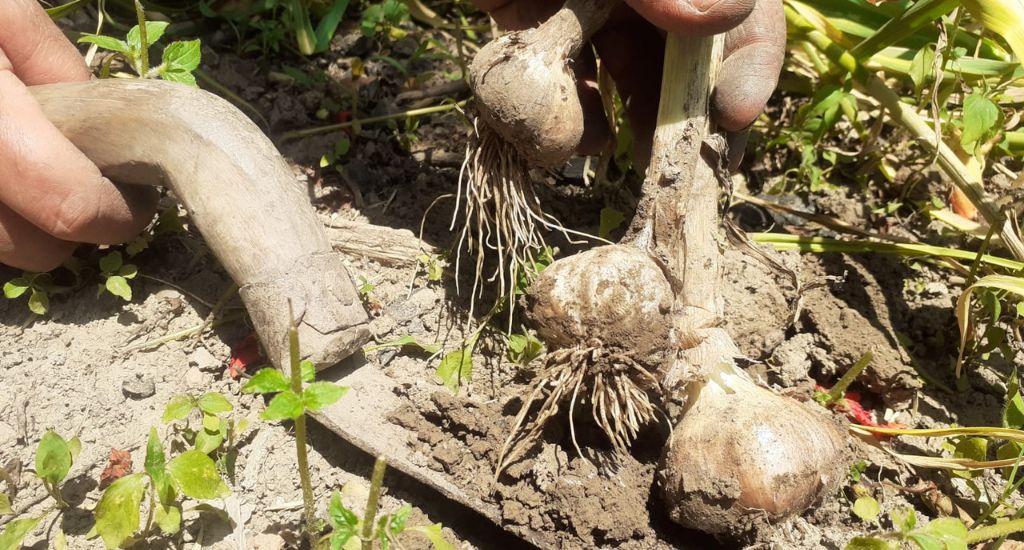
“I used to earn more than Rs 15,000 from surplus garlic grown in our backyard,” laments Firdousa. “Apart from covering some household expenses, I used to save some amount for my personal use. But that has changed over the past few years.”
As the once-bountiful fields of Kashmiri garlic yearn for prosperity once more, the hopes and dreams of its cultivators remain intertwined with the fate of the spice. Will this ancient crop regain its former glory and revive the livelihoods of these farmers?
Also Read | Impact of climate change on Kashmir’s mushroom pickers
The lead image at the top shows baskets full of garlic being sold in a local market in Srinagar. (Photo by Nasir Yousufi)